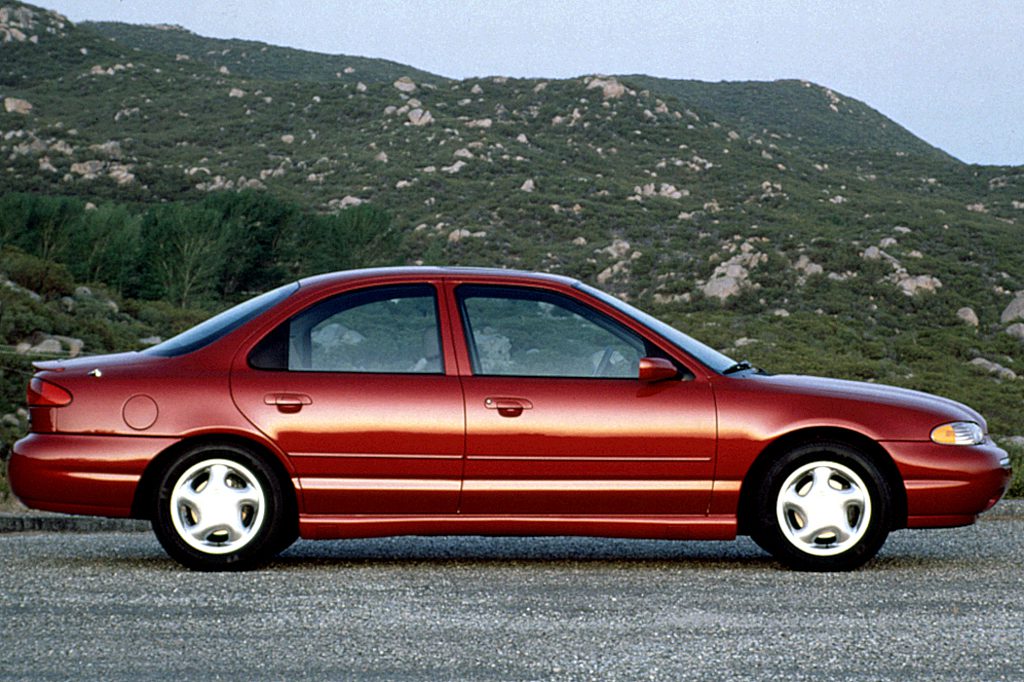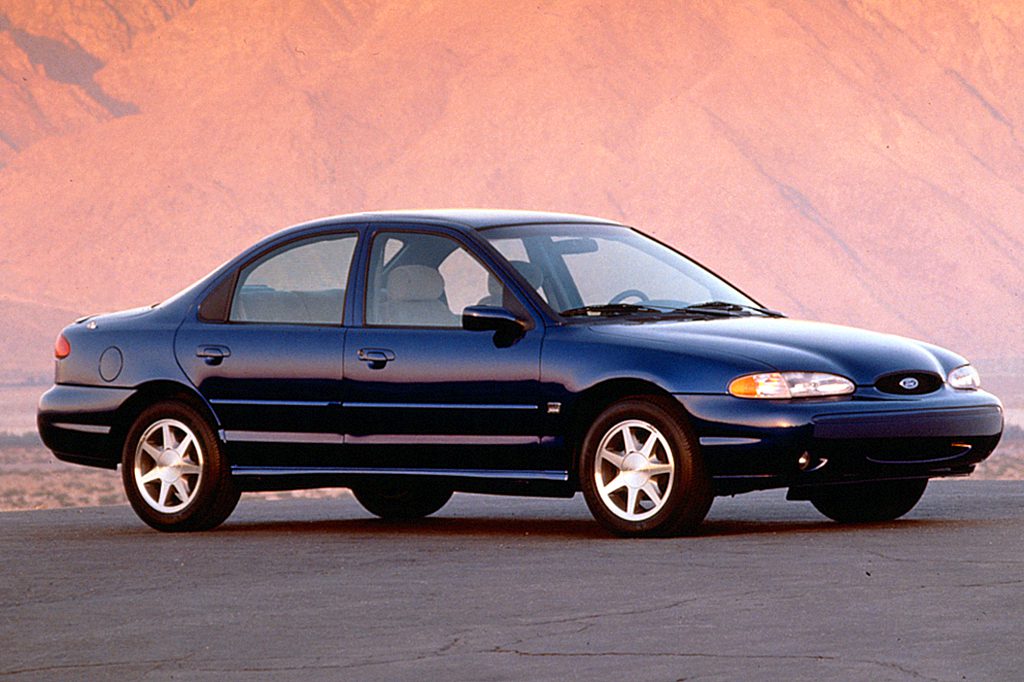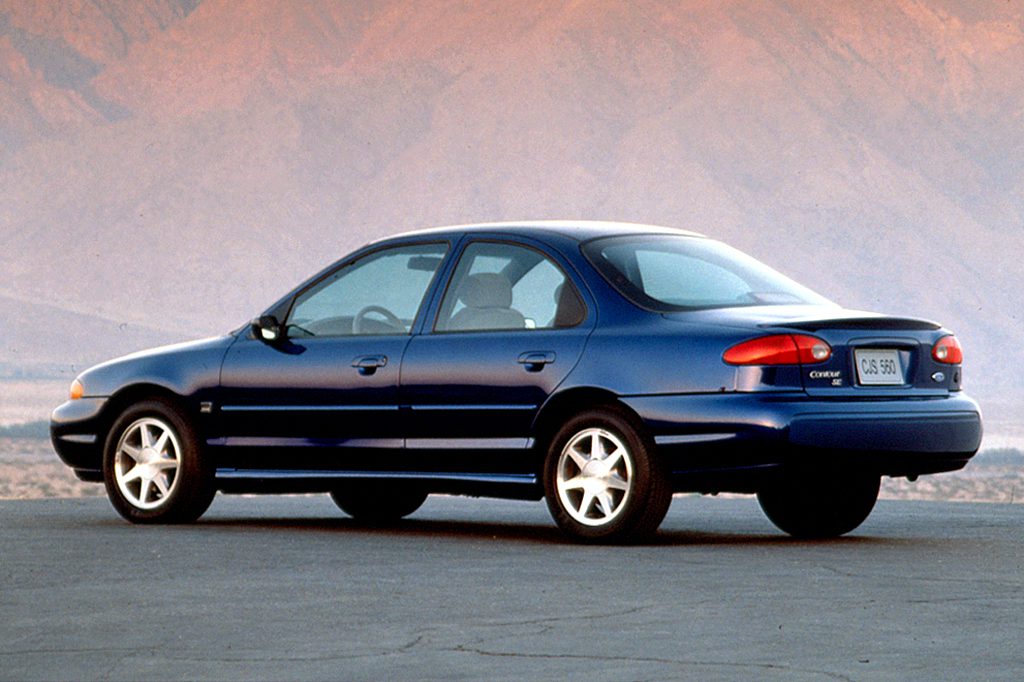| Compact car; Built in USA, Mexico |
|
|
| Good condition price range: $1,100 – $3,300* |

1995 Ford Contour

1995 Ford Contour SE

1996 Ford Contour SE

1997 Ford Contour SE

1997 Ford Contour SE
| Pros: |
|
| Cons: |
|
Ford took a huge step forward in performance, refinement, and overall execution with its compact sedan. All told, Contour is a formidable rival to Japanese compacts and to the Chrysler Cirrus and Dodge Stratus.
Overview
Ford’s latest rival to the Honda Accord and other compact and mid-size sedans replaced the Tempo. Mercury offers a similar 4-door sedan, called Mystique. Both were based on the European Ford Mondeo. Contour came in GL, LX, and sporty SE price levels. Dual airbags were standard. Antilock brakes and traction control (which works at all speeds) were optional on all models. Bumpers that withstand a 5-mph impact are a bonus. Base engine was a 2.0-liter 4-cylinder, producing 125 horsepower. Standard on the SE and optional on the others was a 170-horsepower 2.5-liter V6. Both engines were available with 5-speed manual shift or an optional electronic 4-speed automatic transmission.
Yearly Updates
| 1996 Contour To improve rear-seat space, backs of the front seats were scooped out, yielding an extra inch of leg room. During the 1996 model year, rear seat cushions were repositioned to produce a little more leg and head space. Chrome bumper strips were dropped. A Contour Sport model debuted in April 1996 in standard GL or upscale LX series. |
| 1997 Contour A new lower-priced base model debuted later in the 1997 model year. Traction control was dropped, but antilock braking remained available separately. All models added a standard trunk light and tilt steering wheel. |
| 1998 Contour Ford dropped the Base and GL and added a high-performance SVT model. The SVT used the 2.5-liter V6 engine but in 195-horsepower tune. Five-speed manual was the only transmission, and the SVT also added antilock brakes, sport suspension, larger tires, and other goodies. All Contours got a new center console with armrest. |
| 1999 Contour For ’99 Contour shed the base and GL models, leaving only the LX, SE, and SVT editions. LX and SE models got more sporting suspension settings, and all models got a slightly larger fuel tank. |
| 2000 Contour Only a single Sport model remained for 2000, with features that had been optional on the SE, including a 170-horsepower V6. The high-performance SVT could still be obtained through selected Ford dealers. |
